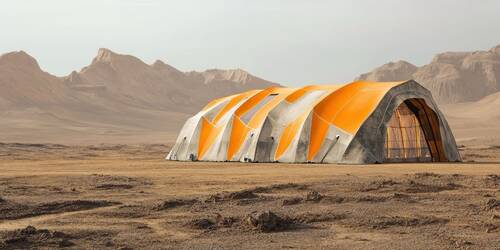
22 Nov What Is An Environmental Control Unit And How Does It Work?
Have you ever wondered how sensitive equipment stays operational in scorching deserts of freezing arctic conditions? The answer lies in a sophisticated piece of technology called an environmental control unit. These remarkable systems are working behind the scenes, ensuring that everything from military communications equipment to medical devices is working perfectly regardless of external conditions.

Capabilities and Applications
An environmental control unit (ECU) is a specialized climate control system that maintains precise temperature, humidity, and air quality in enclosed spaces. They work like your heating, ventilation, and air conditioning (HVAC systems) but have more advanced features and can handle extreme conditions with unmatched reliability.
You can often find ECUs in areas where stable temperatures are essential, such as:
Military Camps and Command Posts
Military environmental control units are indispensable in the field. They guarantee that the personnel and equipment can function despite the desert heat or arctic cold. An environmental control unit used for such purposes often operates flawlessly in temperatures as low as -60°F (-51°C) or as high as 132°F (91°C). Military ECUs likewise protect sensitive electronics in mobile command centers.
Healthcare Facilities
Hospitals and laboratories use environmental control units to create sterile, controlled environments essential for patient care and research. These units also help protect expensive diagnostic equipment.
Data Centers
Water, humidity, and dust are highly damaging to sensitive electronic devices. Overheating in a data center can lead to costly downtime and permanent equipment damage. ECUs protect these essential spaces by maintaining precise temperature, humidity, and air quality levels.
Industrial and Manufacturing Plants
Factories that handle delicate materials or processes require stable environments. ECUs help prevent contaminants and guarantee product quality because of their primary functions and capabilities.
Mobile Tents
Disaster relief shelters and mobile medical units often rely on portable ECUs to provide comfort and functionality.
Environmental control units adapt quickly to ambient temperatures and ecological challenges. Mining companies and nuclear power plants can likewise use ECUs in their operations. Manufacturers understand the critical nature of their deployment, and that’s why some units have a comprehensive five-year warranty.
How ECUs Work
A typical unit consists of several key components. These interconnected parts work tirelessly to monitor, adjust, and maintain the desired settings:
Sensors and Monitors
Sensors are the backbone of any ECU. They measure key environmental factors such as air pressure, humidity, and temperature. When sensors detect a rise in ambient temperatures, the system triggers a cooling mechanism and vice versa.
Cooling and Heating Systems
The cooling or heating systems kick in based on the input from the sensors. Some advanced ECUs can automatically adjust temperatures from freezing cold to scorching hot without missing a beat.
Input Devices and Methods
Users can also operate an ECU through an input device like a control panel, remote, or, in some cases, smartphone apps. These tools allow you to customize settings, set timers, or switch between cooling and heating modes.
Air Circulation and Filtration
Although they’re most known for regulating temperature, ECUs have other functions. These units clean the air and circulate them well. Built-in filters remove pollutants, allergens, or dust, making them particularly important in sensitive areas like medical research laboratories, hospitals, and military bases.
It’s important to note, though, that modern units are capable of handling large areas while minimizing energy waste. They also have optimized systems that prioritize energy efficiency and consume less power.

Selecting The Right Unit
You can find environmental control units in various sizes and cooling capacities, measured per British Thermal Units (BTU). A 5-ton ECU typically possesses up to 60k BTU and has a higher capacity than the smaller 3-ton unit.
Choosing the right system depends on multiple factors. You’ll need to consider:
- Required cooling capacity
- Operational environment
- Availability of power sources
- Space constraints
- Redundancy needs
- Maintenance requirements
Making an informed choice ensures optimal performance and longevity. While picking a unit with advanced features and multiple input methods looks tempting, it’s best to match your needs with the ECU’s capabilities well. Taking time to evaluate these factors saves you time and resources in the long run.
Installation and Maintenance
Proper installation and regular maintenance are essential to get the most out of your environmental control unit. Professional installers follow manufacturer guides for appropriate placement, use, maintenance, and troubleshooting.
When placing your unit, ensure that the area is:
- Clear from airflow disruptions
- Accessible for maintenance and repair
- Away from direct environmental exposure
- Within reach of power sources
Although ECUs operate in tough conditions, they still need regular filter inspections and replacements. Users must also check refrigerant levels and clean the coils if required. So is testing the electrical components to ensure everything is working well.
Wrapping Up
Electronic control units have vast applications across many industries. They help protect military equipment in the desert or make medical devices in a mobile clinic more reliable. Understanding how these units work is crucial for performance and operation. Their ability to handle extreme environments makes them indispensable tools for maintaining stability in tough and delicate situations.
—————————–
The information on MedicalResearch.com is provided for educational purposes only, and is in no way intended to diagnose, cure, or treat any medical or other condition.
Some links are sponsored. Products are not warranted or endorsed.
Always seek the advice of your physician or other qualified health and ask your doctor any questions you may have regarding a medical condition. In addition to all other limitations and disclaimers in this agreement, service provider and its third party providers disclaim any liability or loss in connection with the content provided on this website.
Last Updated on November 22, 2024 by Marie Benz MD FAAD
